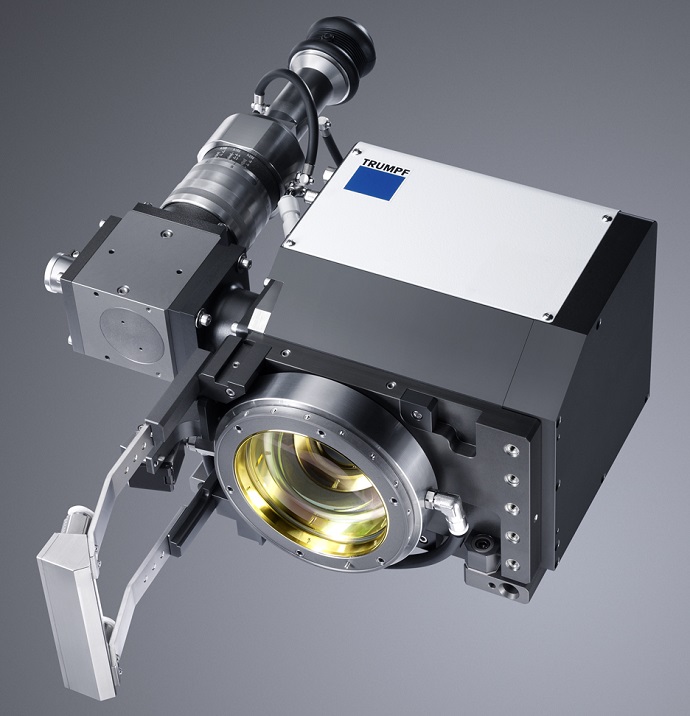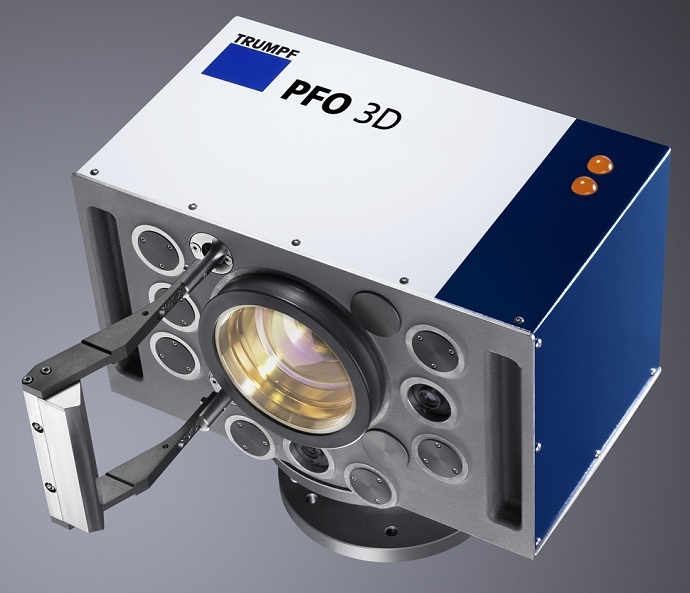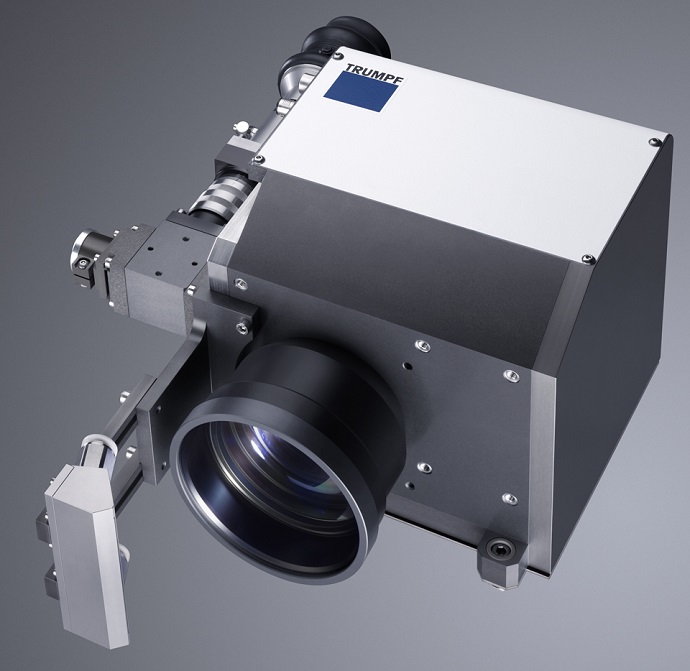Ditzingen, June 24, 2014 – TRUMPF is setting new benchmarks with its newest generation of programmable focusing optics (PFO). The inner workings have been completely reengineered, with new motors, new mirrors and clever electronics. This new technical design makes processing faster and more dynamic. The new optics are exceptionally high in performance and, thanks to their excellent repeatability, very precise and reliable.

PFO 33 can be used with the TruDisk, TruFiber, TruPulse and TruMicro lasers up to eight kilowatts of output. It is suitable for 2D processing.
Photo: TRUMPF
The new PFO generation embraces four models. The two smaller models, PFO 14 and PFO 20, can be used with lasers producing up to two kilowatts of power, while the higher-capacity PFO 33 and PFO 3D are designed to handle up to eight kilowatts of laser power. With the introduction of the latest generation of programmable focusing optics, TRUMPF is underscoring its leadership position in classical laser remote processing and processing on the fly. Now it is even possible to program oscillating motions. In this welding technique, the laser beam does not simply pass in a straight line along the welding gap but oscillates instead. Two high-speed deflection mirrors in the optical system position the laser beam on the X and Y axes. In addition, a collimation lens, also movable and located between the collimator and the scanner mirror, focuses the beam in the Z axis. In this way wobble geometries can also be effected for angled parts. Thanks to the helical motion, the laser beam melts material on the left and right faces of the gap and widens the fusion zone. The gap can be closed without having to add any filler material. That, in turn, means cost savings and reduced complexity.

The PFO 3D is suitable for use with TruDisk lasers up to eight kilowatts of power and enables 3D processing.
Photo: TRUMPF
In addition to improved dynamics and precision, the new TRUMPF optics are characterized by innovative functions. Thus, for example, it is possible to measure the mirror’s position exactly and to correct it if needed – independent of thermal and moisture conditions. The CalibrationLine option measures and calibrates the precise location of the laser spot and the power of the laser beam at the workpiece. With the assistance of a focusing and sensor unit placed on the clamping unit, the software regularly checks to ensure that the focus is actually at that point in space where the controls presume it is. If this is not the case, then CalibrationLine will either make the appropriate adjustment or issue a fault message. This means great process reliability and repetition accuracy for remote welding.

The software automatically detects edges, drilled holes and other features on the workpiece and launches the appropriate program, stored in memory.
Photo: TRUMPF
With TRUMPF’s new PFO generation, laser processing can be carried out both in the plane and in space – and without the focusing optics or the workpiece having to be moved. Even large workpieces can be processed on the fly. To do this, the SimpleCoordination option synchronizes the movement of the scanner in the PFO with the motion of the robot. It does this fully automatically and refocuses as needed. The great advantage is that the software permits simple and comfortable programming of a wide variety of cutting and welding contours across a large field. In the course of introducing this improvement, TRUMPF also introduces the new PFO SmartTeach app. It lets the user set up the PFO program right at the component being worked, with the convenience of a tablet computer and making use of live image transmission. Depending on the details of the component, the set-up time can be almost halved, and that means higher productivity. This is also true for the new image processing feature. The software automatically detects edges, holes and other features on the workpiece and activates the appropriate program in storage. At the same time, it transmits the exact position of the workpiece to the laser controls, making for high quality at the welding seam. That not only boosts process capacities, but also increases the degree of efficiency in production.














